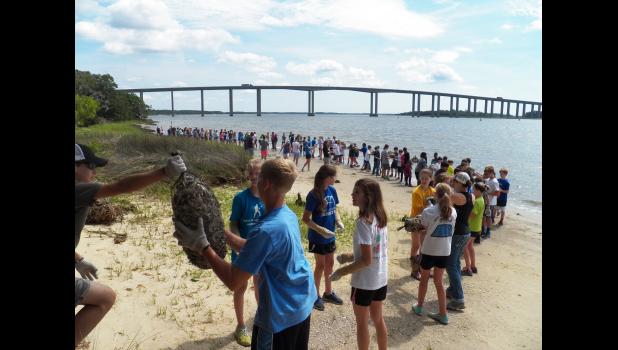Harvesting oysters not only disrupts their life cycle. It also robs fish, shrimp, crabs, and other animals of their optimal reef habitat, removes one of nature’s most effective water filtration systems, and decreases protection against shoreline erosion.
The good news is that we need not curtail our oyster consumption; we can instead promote the creature’s proliferation. For 15 years now, there has been an effective means to do just that. The South Carolina Oyster Restoration and Enhancement Program (SCORE) is a community-based oyster restoration program administered by the South Carolina Department of Natural Resources (DNR) in collaboration with federal, state, and local funding partners, as well as dozens of community and school partners.
Why do South Carolina’s oysters require restoration? Oyster larvae must attach to hard surfaces, and they happen to prefer other oyster shells. But oyster reefs are depleted by harvesting, coastal development, and even boat wakes. By manually replenishing the shell reefs through the SCORE program, future generations of oysters are saved.
The latest group to get in on the restorative effort is the seventh grade class at Charleston‘s Daniel Island School (DIS). Spearheading the middle schoolers’ participation in SCORE, DIS technology manager Rebecca Roemer attended the program’s training last summer.
“This is a great project for students,” attests Roemer. “They are building oyster reefs to enhance the habitat for shrimp, fish, crabs. Oysters are natural filters for the water, so students are helping to improve water quality, too. Marine biology is part of SC standards of learning for seventh grade.”

